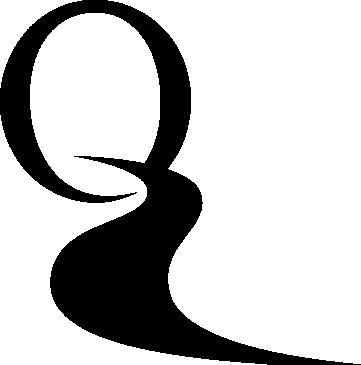ДЖОТТО В РУССКОЙ ПОЭЗИИ: НЕГАТИВ, ПРОЕКТ И КОНСТРУИРОВАНИЕ ОБЩЕСТВА
Аннотация
Восприятие наследия Джотто в русской литературе и культуре всегда было напрямую связано не только с концепцией Ренессанса и развития западной культуры, но с особым интересом к письму и к способности повествования, данного в новаторском стиле, создавать сообщества. Главной темой становился при этом переход от сообщества к обществу, иначе говоря, от общины к церковности, поэтому статус Джотто как гения всегда дополнялся размышлениями о других гениях, которые прямо или косвенно произвели этот переход. Несмотря на скудость упоминаний имени Джотто, поэзия не столько отражала существующую искусствоведческую репутацию художника, сколько предвосхищала или корректировала выводы искусствоведов. Внимательный анализ высказываний о Джотто в русской поэзии (В. Комаровский, С. Соловьев, А. Вознесенский) в сравнении с выводами русской философии и гуманитарной науки (П. Флоренский, П. Муратов, П. Бицилли, В. Лазарев) позволяет уточнить сюжеты стихотворений, связанных с живописными впечатлениями. Техника светотени Джотто, впервые начавшего передавать правдоподобную глубину с помощью иллюзорного распределения света, стала пониматься как техника прежде всего намека и отражения, негатива, в сравнении с которым позднейшая итальянская живопись выглядит ярким позитивом. Такое понимание не соответствовало действительному месту Джотто в истории искусства, но вполне позволяло соотнести Джотто с византийским и древнерусским искусством, использующим золотой фон, акцентировав в наследии итальянского художника не столько правдоподобие, сколько способность создавать собственный художественный проект, соотносимый с другими проектами.
Скачивания
Литература
Аверинцев, С.С. (1997). Цветики милые братца Франциска»: Итальянский католицизм-русскими глазами. В Православная община. No. 38. 97-105.
Бицилли, П.М. (1996). Место Ренессанса в истории культуры. Санкт-Петербург: Мифрил.
Лазарев, В.Н. (1986) История византийской живописи. Москва: Искусство.
Леонова, Н.Е. (2010) Образ лилии в искусстве модерна и в поэзии И.Ф. Анненского. В Вестник Новгородского государственного университета им. Ярослава Мудрого. No 56. 40-43.
Марков, А.В. (2018). Прокрутка воображения назад. В Новое литературное обозрение. No 152. 281-286.
Муратов, П.П. (2000). Открытия древнего русского искусства. В Муратов, П.П. Ночные мысли. Москва: Прогресс. 47-67.
Назарова, О.А. (2018). «Полиптих-витрина» в итальянской живописи конца XIII– первой половины XIV века. В Искусствознание. No 1. 168-207. Парфёнова, Е.В. (2018). Влияние на художников Флоренции первой половины XIV в. современной им религиозной схоластической доктрины В Вестник Томского государственного университета. Культурология и искусствоведение. No 31. 179-186.
Флоренский, П.А. (2000). Обратная перспектива. В Флоренский, П.А. Собрание сочинений. В 4 т. Т. 3. Ч. 1. Москва: Мысль. 46-100. References
Averintsev, S.S. (1997). Tsvetiki milye brattsa Frantsiska»: Ital'ianskii katolitsizm- russkimi glazami [Cute flowers of Brother Francis: Italian Catholicism through Russian eyes]. In Pravoslavnaia obshchina [Orthodox community]. No. 38. 97- 105. (In Russian.)
Bitsilli, P.M. (1996). Mesto Renessansa v istorii kul'tury [Place of the Renaissance in the history of culture]. Saint-Petersburg: Mifril. (In Russian.)
Lazarev, V.N. (1986) Istoriia vizantiiskoi zhivopisi [The history of Byzantine painting]. Moscow: Iskusstvo. (In Russian.)
Leonova, N.E. (2010) Obraz lilii v iskusstve moderna i v poezii I.F. Annenskogo [The image of a lily in the art of modernity and in the poetry of I.F. Annensky]. In Vestnik Novgorodskogo gosudarstvennogo universiteta im. Iaroslava Mudrogo [Bulletin of Novgorod State University named after Yaroslav the Wise]. No. 56. 40-43. (In Russian.)
Markov, A.V. (2018). Prokrutka voobrazheniia nazad [Scrolling imagination back]. In Novoe literaturnoe obozrenie [New literary review]. No. 152. 281-286. (In Russian.)
Muratov, P.P. (2000). Otkrytiia drevnego russkogo iskusstva [Discoveries of ancient Russian art] In Muratov, P.P. Nochnye mysli [Night meditations]. Moscow: Progress. 47-67. (In Russian.)
Nazarova, O. A. (2018). «Poliptikh-vitrina» v ital'ianskoi zhivopisi kontsa XIII — pervoi poloviny XIV veka [“Polyptych-showcase” in Italian painting of the late 13 – the first half of the 14 century]. In Iskusstvoznanie [Art history]. No. 1. 168- 207. (In Russian.)
Parfenova, E.V. (2018). Vliianie na khudozhnikov Florentsii pervoi poloviny XIV v. sovremennoi im religioznoi skholasticheskoi doktriny [Influence on the artists of Florence in the first half of the fourteenth century of contemporary religious scholastic doctrine]. In Vestnik Tomskogo gosudarstvennogo universiteta. Kul'turologiia i iskusstvovedenie [Bulletin of Tomsk State University. Culturology and art history]. No. 31. 179-186. (In Russian.)
Florenskii, P.A. (2000). Obratnaia perspektiva [The Reverse Perspective]. In Florenskii, P.A. Sobranie sochinenii [Collected Works]. In 4 vols. Vol 3, part 1. Moscow: Mysl'. 46-100. (In Russian.)
Copyright (c) 2020 Jasmina Guseva; Alexander Markov

Это произведение доступно по лицензии Creative Commons «Attribution-NonCommercial-NoDerivatives» («Атрибуция — Некоммерческое использование — Без производных произведений») 4.0 Всемирная.
Philological studies © 2019. This work is licensed under a Creative Commons Attribution-Noncommercial-No Derivative Works 3.0 Unported License










